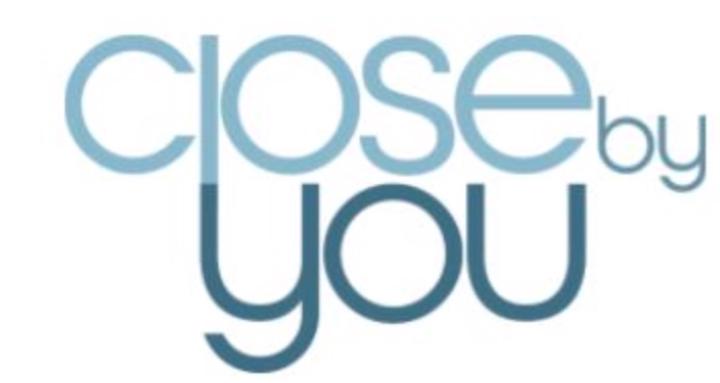
Write something
Understanding Men's Anger: Beyond the Surface
Anger is often seen as the one emotion men are “allowed” to express openly. Ask many men how they feel, and you might get silence, confusion, or a dismissive shrug—unless they’re angry. Then they may be clear and direct. But while anger appears on the surface, what lies beneath is often much more complex. From a young age, many men are taught that showing vulnerability—like sadness, fear, or insecurity—is unacceptable. These feelings are pushed down, hidden, or denied altogether. Instead, anger becomes the socially acceptable outlet, the way to demonstrate “strength” or “control.” In Schema Therapy, we see how these early lessons become deeply ingrained schemas—unconscious patterns of life. Messages like “vulnerability is weakness” or “I must always be in control” shape how men respond in intimate relationships. Anger serves as a shield, protecting the more tender, fearful parts of themselves that they have learned to dismiss or even fear. How Anger Masks Fear Anger isn’t inherently harmful. It can be a healthy signal that something isn’t working, that a boundary is being crossed, or that change is needed. But when anger becomes the only emotional language a man speaks, it can disconnect him from himself and from those he loves. Often, anger covers fear. Not necessarily fear in the apparent sense—like fear of physical danger—but more subtle, relational fears: - Fear of inadequacy - Fear of not being loved or accepted - Fear of losing control - Fear of vulnerability itself These fears are rarely acknowledged directly. Instead, they manifest in daily life in ways that can harm relationships. Recognising the Patterns Consider how these patterns might appear: - Criticising a partner for spending too much time with friends might come from a fear of being uninteresting or unimportant. - Getting angry about a partner’s demanding job might mask fears of falling behind or feeling “less than.” - Exploding over feeling corrected or critiqued might conceal deep fears of failure or rejection. - Feeling resentful about the amount of attention children receive might reflect a fear of not knowing how to create closeness. -
0
0

Why Fathers’ Emotional Health Matters for Children
In recent years, There’s been a welcome rise in awareness about maternal mental health. Conversations about postpartum depression, maternal burnout, and the need for better support have started to break through cultural silence and stigma. However, one crucial truth often remains unspoken: the emotional well-being of fathers matters deeply for their children as well. It’s easy to assume a father’s mental health is secondary or that it simply won’t have as much impact on the family. This assumption is not only false, but it can also be damaging. When a father struggles with depression or emotional disconnection, the effects ripple through his relationships, shaping the developmental environment in which his children grow up. The Hidden Transmission of Emotional Struggles Long-term studies of urban families show that children whose fathers experience depressive symptoms often display increased oppositional behaviours and signs of hyperactivity years later. But this isn’t just about inheriting a genetic vulnerability to mood disorders. It’s about how emotional states are transmitted relationally. In Schema Therapy, we recognise that early experiences with caregivers help build core “schemas” or life patterns—deep beliefs about the self, others, and the world. A father struggling with depression may be more withdrawn, irritable, or less responsive. Even if he loves his children, he may not engage with them in warm, consistent ways. This can plant the seeds of schemas such as Emotional Deprivation, Abandonment, or Mistrust/Abuse—patterns that shape how children will see themselves and relate to others for decades to come. These dynamics don’t mean a depressed father is “to blame.” They mean we must see parental mental health as a family health issue. Possible Mechanisms: More Than Sadness Depression in fathers often shows up not as tears but as: - Irritability and anger outbursts - Emotional withdrawal or disinterest - Reduced physical affection or play - Pessimistic worldviews - Harsh or inconsistent discipline
0
0

Become part of this Community and Invite your Friends to do the same
It’s our responsibility to help others and work toward making the world a better place. This community was created with that purpose in mind: to offer support, freely and wholeheartedly, to improve people’s lives in any way we can. Let’s improve mental health around the world—together, with compassion, commitment, and genuine care for one another.
0
0
Unlocking the Power of the Mind with Schema Therapy
Why do some patterns in our lives repeat, even when we know they hurt us? Why do certain emotional wounds feel so deep and complex to heal? Schema Therapy was developed to address precisely these questions. What Is Schema Therapy? Schema Therapy is an integrative approach that combines cognitive-behavioural, attachment, psychodynamic, and experiential techniques. It focuses on identifying and transforming deeply rooted patterns known as early maladaptive schemas. Schemas are broad, pervasive themes or patterns made up of memories, emotions, thoughts, and bodily sensations. They develop in childhood or adolescence when core emotional needs aren’t met, and they continue to shape how we see ourselves, others, and the world—even in adulthood. Unmet Core Emotional NeedsAccording to Schema Therapy, many psychological problems stem from basic emotional needs not being met early in life, such as: - Safety and security - Nurturance and empathy - Autonomy and competence - Freedom to express emotions and needs - Realistic limits and self-control When these needs go unmet, we develop maladaptive schemas that lead to painful patterns in relationships, self-image, and coping. Common Maladaptive Schemas Examples include: - Abandonment - Mistrust/Abuse - Emotional Deprivation - Defectiveness/Shame - Failure - Dependence/Incompetence - Entitlement/Grandiosity These schemas can powerfully shape our emotional reactions, beliefs, and behaviours, often outside of conscious awareness. Coping Styles and Modes Schema Therapy also explores the coping styles people use to manage the pain of their schemas: - Surrender (giving in to the schema) - Avoidance (blocking feelings or situations that trigger it) - Overcompensation (acting in the opposite way to hide vulnerability) Therapists also work with Modes, which are moment-to-moment emotional states and coping parts of the self, like the Vulnerable Child, Angry Child, Detached Protector, Punitive Parent, and the Healthy Adult.
0
0

What Is Mindfulness? Meaning, Practice, and 7 Key Exercises Used in Therapy
What Is Mindfulness? Meaning, Practice, and 7 Key Exercises Used in Therapy Mindfulness isn’t just a buzzword—it’s a way of cultivating awareness of the present moment with openness and without judgment. In clinical settings, mindfulness is employed to help individuals relate to thoughts, emotions, and sensations in a different way, thereby increasing psychological flexibility and reducing suffering. What Is Mindfulness? Jon Kabat-Zinn famously defined it as “paying attention in a particular way: on purpose, in the present moment, and nonjudgmentally.” It’s not just about relaxation, but about changing how we respond to our experiences. Clinical Benefits Research supports mindfulness-based interventions for stress, anxiety, depression, chronic pain, and relapse prevention. By improving emotion regulation and self-awareness, mindfulness can be a powerful component of therapy. 7 Mindfulness Exercises Often Used in Clinical Practice: Here are seven core practices that help cultivate mindfulness skills: 1️⃣ Body Scan: A guided practice moving attention slowly through the body. It helps increase awareness of bodily sensations and teaches nonjudgmental observation, supporting relaxation and grounding. 2️⃣ Breath Awareness: Focusing on the natural rhythm of the breath without trying to change it. This develops concentration and serves as an anchor to return to the present when the mind wanders. 3️⃣ Mindful Walking: Paying close attention to the sensations of walking—the movement of the feet, the shifting weight, contact with the ground. This brings mindfulness into everyday life and promotes a sense of grounding. 4️⃣ Mindful Eating: Eating slowly and intentionally, paying attention to tastes, textures, and smells. This reduces automatic, distracted eating and can increase appreciation for food. 5️⃣ Mindfulness of Thoughts: Observing thoughts as mental events rather than truths or commands. This practice helps create distance from rumination or intrusive thoughts without suppressing them.
0
0

1-11 of 11

skool.com/allowing-good-to-get-inside-3654
We help you to grow relationally, emotionally and psychologically. A Free video course on "How to become immune to Stress" for the first 50 registered
Powered by
